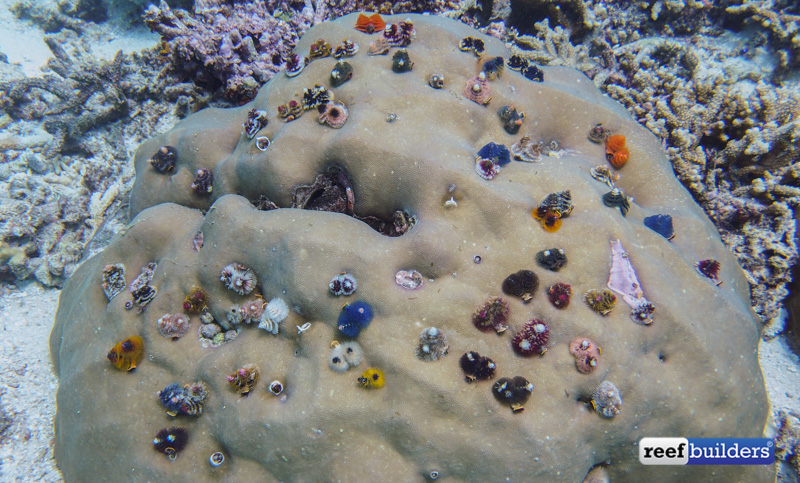Sabellida is a suborder of annelid worms in the class Polychaeta. These tube dwelling worms are filter feeders and are commonly identified by a ring of feathery tentacles extending outwards.
Members of the suborder include the feather duster worms (Sabellastarte spectabilis) in the family Sabellidae, and the Christmas tree worm (Spirobranchus giganteus) in the family Serpulidae. We came across both species of worms in Indonesia and spent a considerable time observing their beautifully colorful tentacles, and intricate patterns.
The members of these families are similar in the way they use their feathery tentacles as gills for breathing and to trap food particles, but differ greatly in appearance, habitat and tube construction.
<img class="wp-image-108955 size-full" src="https://reefbuilders.com/files/2015/12/Christmas-worm-3.jpg" alt="Feather duster worms, Sabellastarte spectabilis” width=”800″ height=”600″> Feather duster worms, Sabellastarte spectabilisFeather duster worms have a single crown of feeding appendages called radioles in two fans shaped groupings. The appendages extend outward trapping food and small cilia direct it towards the central mouth. The feather duster worm traps varying sizes of particles in the feeding crown and will feed off of the smaller particles of plankton, detritus, and microscopic organisms.
Feather duster worms live in soft tubes which they build by cemented together fragments of shells and sand which have been caught in the feeding crown. You can find feather duster worms living in sandy, muddy bottoms, or living on the reef. The construction of a soft mucus tubes in the Sabellidae family differ from the Serpulidae family which secrete tubes of calcium carbonate.
The Christmas tree worms belong to the family Serpulidae and can be commonly be found living embedded in the skeleton of Porites corals. The coral host does not die from the burrowing worm and in fact if the coral does die so will the worm, as it will not be able to compete with the algae that takes over.

The crown of a Christmas tree worm is easily recognizable by its spiraled Christmas tree shape and vibrant coloration, from blue, orange, yellow, red and white. Christmas tree worms and feather duster worms are both very sensitive to disturbances in the water and will rapidly retract into their tubes if they sense movement or shadows.
Members of the Serpulidae, Christmas tree worm family differ from the Sabellidae, Feather worms in that they have a specialized cover called an operculum which blocks the entrance of their tubes when they withdraw. Both tube worms will typically re-emerge a minute later, very slowly, to test the water before fully extending their plumes

If you would like to keep tube worms in your home aquarium they prefer to be in the shade and out of bright lights, and remember both Feather dusters and Christmas tree worms are filter feeders which means they have to be feed regularly. We recommend a mix of liquid plankton and something a little meatier like live rotifers.




